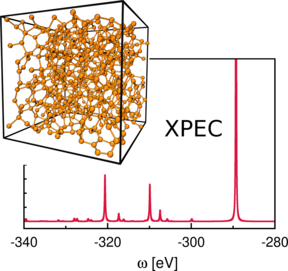Unravelling the microscopic structure of materials

XPEC will integrate together machine-learning data classification and high-dimensional regression with multilevel quantum chemistry methods (DFT and GW) to create the ultimate predictive tool for computational generation of X-ray spectra.
X-ray spectroscopy is a powerful tool to unravel the microscopic structure of materials, that is, how atoms are arranged at the nanoscale. This experimental technique would in principle allow us to precisely establish the nature of chemical bonding in functional materials and make the link between a material's atomic structure and its performance in real-life applications. This knowledge is of vital importance to optimize the new generation of materials needed for environmentally-friendly technologies, such as clean fuel production and sequestration of atmospheric CO2. Unfortunately, interpretation of X-ray spectra of complex materials is extremely challenging, since signals coming from different atomic environments overlap. The new computational approach developed within the XPEC project will provide an invaluable tool to predict X-ray spectra and interpret existing experimental results.
Picture: Dorothea Golze
- Published:
- Updated:
Read more news

DeployAI Partners Gather for Heart Beat Meeting in Helsinki
The European DeployAI project's partners gathered for the Heart Beat meeting hosted by Aalto University Executive Education in Helsinki.
Get to know us: Associate Professor Maria Sammalkorpi
Sammalkorpi received her doctorate from Helsinki University of Technology 2004. After her defence, she has worked as a researcher at the Universities of Princeton, Yale and Aalto.
Aalto computer scientists in ICML 2024
Computer scientists in ICML 2024